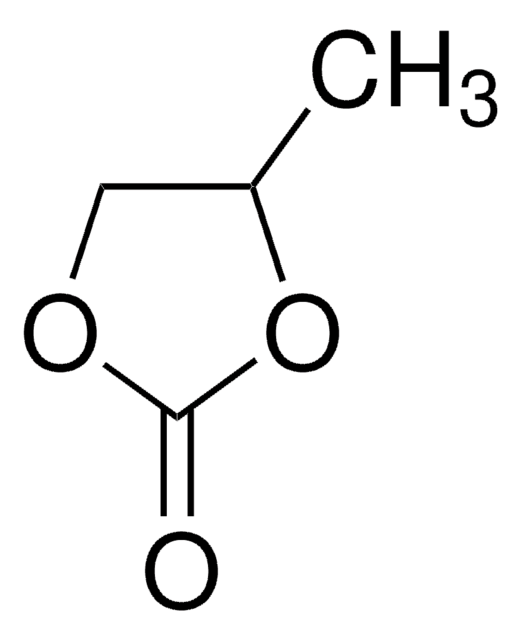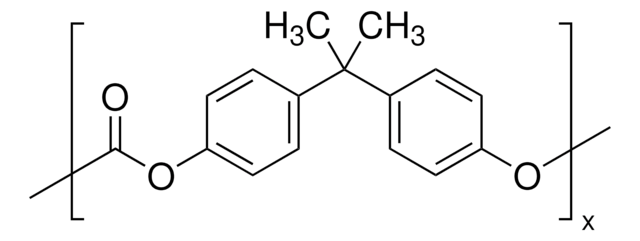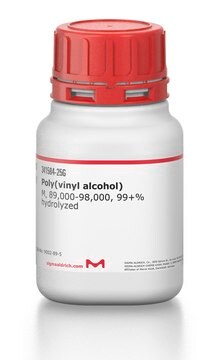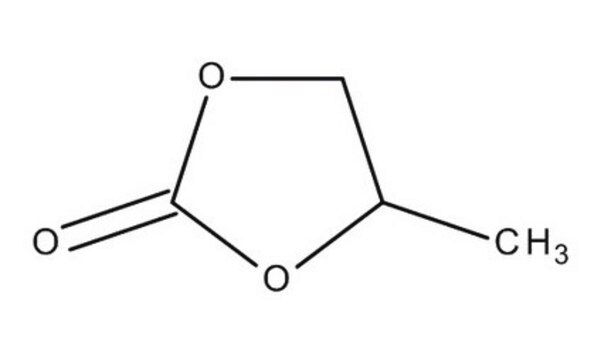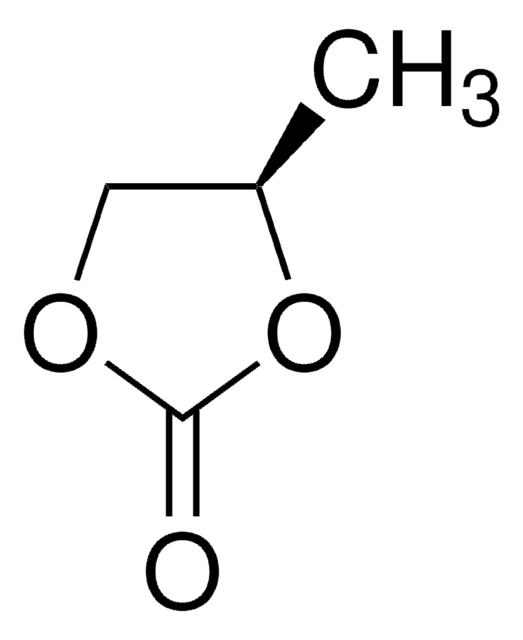389021
Poly(propylene carbonate)
average Mn ~50,000 by GPC
Synonym(s):
PPC
Sign Into View Organizational & Contract Pricing
All Photos(3)
About This Item
Linear Formula:
[CH(CH3)CH2OCO2]n
CAS Number:
MDL number:
UNSPSC Code:
12162002
NACRES:
NA.23
Recommended Products
General description
Poly(propylene carbonate) (PPC) is an aliphatic polycarbonate which is mainly used as a packing material and binder resin. The ester group allows the backbone to have molecular flexibility. It is prepared by reacting carbon dioxide and propylene oxide. It has a low thermal stability which can be improved by capping the polymer with active agents.
Application
PPC can be used in the electrolytic composites which can be used in the development of electrochemical devices. It is a biocompatible and biodegradable polymer that can be used as a scaffold for potential applications in tissue engineering.
Storage Class
11 - Combustible Solids
wgk_germany
WGK 3
flash_point_f
Not applicable
flash_point_c
Not applicable
ppe
Eyeshields, Gloves, type N95 (US)
Choose from one of the most recent versions:
Already Own This Product?
Find documentation for the products that you have recently purchased in the Document Library.
Customers Also Viewed
Preparation and characterization of poly (propylene carbonate)/montmorillonite nanocomposites by solution intercalation
Shi X and Gan Z
European Polymer Journal, 43(12), 4852-4858 (2007)
Non-volatile polymer electrolyte based on poly (propylene carbonate), ionic liquid, and lithium perchlorate for electrochromic devices
Zhou D, et al.
The Journal of Physical Chemistry B, 117(25), 7783-7789 (2013)
Thermal degradation kinetics of uncapped and end-capped poly (propylene carbonate)
Peng S, et al.
Polymer Degradation and Stability, 80(1), 141-147 (2003)
Electrospinning homogeneous nanofibrous poly (propylene carbonate)/gelatin composite scaffolds for tissue engineering
Jing X, et al.
Industrial & Engineering Chemistry Research, 53(22), 9391-9400 (2014)
Poly (propylene carbonate), old copolymers of propylene oxide and carbon dioxide with new interests: catalysis and material properties
Luinstra GA
Polymer Reviews, 48(1), 192-219 (2008)
Articles
In this article, we discuss issues critical to successful application of the electrospinning technique, including control of individual nanofibers to form secondary structures and assembly of nanofibers into 3D architectures.
Our team of scientists has experience in all areas of research including Life Science, Material Science, Chemical Synthesis, Chromatography, Analytical and many others.
Contact Technical Service